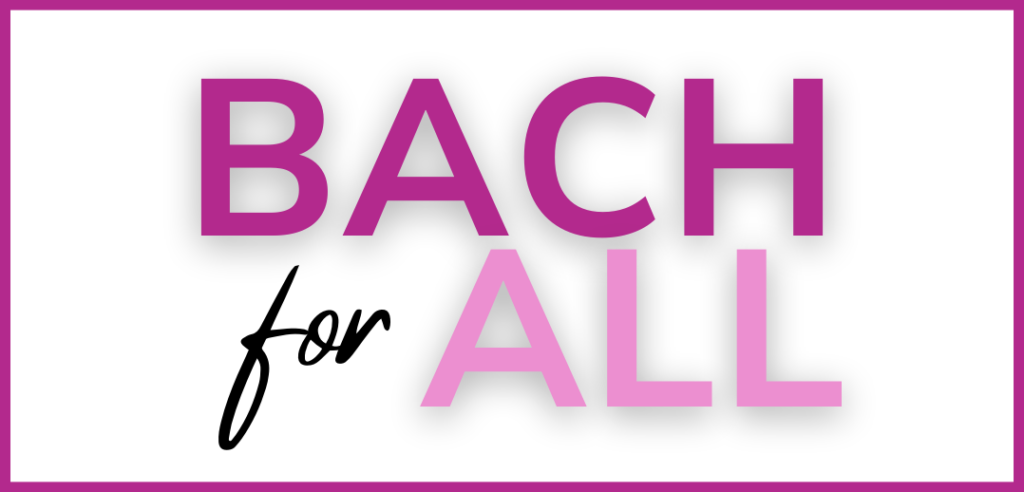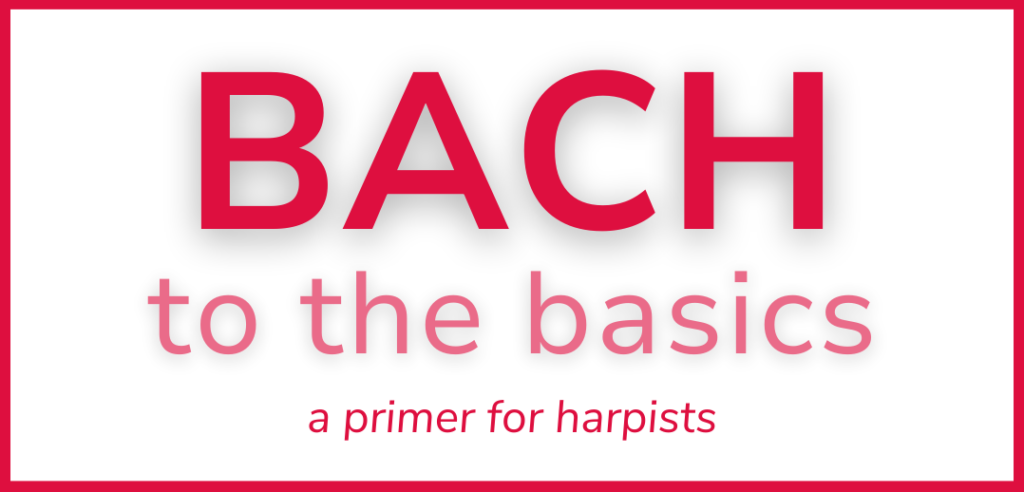Tuning tips
For tuning tips, tricks, and terminology, check out our article extra in this issue. Want to know which apps are best for tuning? Read our review of top tuning apps in this issue.
Tuning your harp is like brushing your teeth. You may hate it, you may love it, you may be able to get away without doing it for a while, but the results will not be pretty. There is no denying that tuning (like tooth brushing) is a vital part of your daily routine.
Those who love tuning often describe it as a ritual that calms the nerves and quiets the mind. In her work as a soloist and chamber musician, New York-based harpist Bridget Kibbey explains, “I’m often stealing away to a quiet corner to tune. I find it helps me get into the zone for a performance.” No matter whether you are sitting down to practice at home or getting ready to perform on stage, tuning can be a comforting constant in your harp life.
Tuning is something we all spend time doing, and harpists face some unique challenges in this department. We talked to the experts to get their advice on how harpists can tune efficiently and effectively.
What does it mean to be in tune?
Imagine two instruments both playing middle C. When these two C pitches are in tune, their sound waves align like calm ocean waves coming ashore in a steady repetition. When pitches are not in tune, the sound waves clash like choppy ocean waves in a storm colliding against each other in all directions. The sound waves of different pitches like C and G can also either align or clash, depending on if you play them in tune or not. Pennsylvania-based harp teacher Anne Sullivan explains, “You can hear the clash as a pulsing commonly called ‘beats,’ which disappears as the notes are brought in tune with each other.” For more about the science and history behind tuning, check out Anne Sullivan’s May/June 2013 Harp Column article “In Tune.”
Why is tuning important?
It is easy to say a harp sounds better when it is in tune, but did you ever stop to ask why?
Harp technician Peter Wiley explains, “The strings on a harp are a chorus constantly exciting each other. The strings that are out of tune reduce the overall voice and resonance.” You can hear the strings exciting each other when you play a chord in the middle of the harp and then muffle only where you played. The harp is still ringing. The sound doesn’t stop until you also muffle the rest of the strings and in particular the wire strings. So, your harp can either ring with lots of sound waves that align, and it sounds full and resonant; or the harp can ring with lots of sound waves that clash, and it sounds dull and dampened.
All musicians strive to play in tune with themselves as soloists, and with other musicians in ensembles. Other instrumentalists can adjust the tuning of a pitch while they produce the sound by adjusting their finger position or changing the shape of their mouth. Unfortunately, harpists and pianists do not have this luxury since tuning our instruments requires tools and time. It does not matter how well you play something, if it is out of tune, then it sounds wrong to the rest of the music appreciating world. As New York City harpist Frances Duffy points out, “Intonation is second only to rhythm in its importance in music.”
Charles Lynch, harp specialist for Mesa (Ariz.) Public Schools, reminds us, “Tuning regularly helps our instruments maintain a stable tuning on a regular basis.” Harps are in a constant state of balancing the load of tension throughout the strings and the structure of the harp. Wiley explains, “When you change the tension on the out of tune strings you also change the tension on the soundboard and on the other strings. The result can often be that strings which were previously in tune are now slightly out of tune.” There is a silver lining. If a harp is kept in tune, it likes to stay in tune.
How do I start?

—Peter Wiley
All the experts agree, tuning your strings in their open position is best. Make sure the pedals are in the flat position or the levers are disengaged from the strings when you tune. Why? If the lever or disc (called a “clamp” in technician speak) is engaging the string when you make tuning adjustments, you are only stretching or slackening a tiny portion of the string—the length from the point where the clamp engages the string to the tuning pin. Later when you release the clamp, to play an A-flat for example, the string will redistribute whatever change in tension you made to that small section across the entire length of the string. The end result being a string that is not in tune in the open position, and it is not in tune in the clamp engaged position either.
In his 2006 Harp Column article, Tip Top Tuning, Wiley suggests the following experiment you can try to demonstrate this principle: “Use your tuning key to tune your third-octave A string slightly below A-flat in the open position (about 1/8 of revolution of the pin). Now engage the clamp to natural (pedal in natural or lever up). With the help of your electronic tuner, tune the string up to the correct A-natural pitch. If you go above A-natural start the example over. When you are sure that the pitch is correct, release the clamp. Now re-engage the clamp back to A-natural and check the pitch on your tuner. The string which you were convinced was properly in tune is now (most likely) out of tune. You can try this on several different strings to get the idea.”
Which string to tune first?

—Bridget Kibbey
Imagine two teams playing tug of war. On one team you have 12 players from the high school football team, and on the other you have a kindergarten class. Who is going to win? It is the same with harp strings. If you tune all those smaller (kindergarten) higher strings first, then go down and make changes to all your larger (football team) wire strings, the wires are going to redistribute tension all over the harp because they are bigger. End result: you’ve “tuned” all the strings, but your harp is still not in tune because physics has worked against you.
Wiley explains his method for tuning with the aid of the Peterson iStroboSoft app. Since he mainly works on pedal harps, he uses the abbreviation 5A to mean 5th octave A, or the lowest space on the bass clef staff.
“The method I use starts with tuning the 5A and working upward to around 4C (middle C). Then tune downward from 5G. I then start again with 5A and continue up to the top of the harp. The reason for [tuning the bottom register first] is that the lower strings affect the tuning of all the strings more so than the upper strings. If you have a few bass wires 10 cents flat and the rest are already tuned when you pull the wires up to pitch, then they will lessen the tension on tuned strings.”
Lynch also uses a similar process, starting in the center of the harp and working down towards the bass wires. When he teaches tuning to harp students in the Mesa public schools, Lynch says he usually start tuning with an A string, because many students are used to tuning to an A on their primary instrument in their band or orchestra class. His goal is to help students be consistent with the tuning practices in their ensemble, and instill the routine and habit of regularly tuning the harp. “Sometimes we tune using intervals (fourths, fifths, octaves) to introduce basic ear training. While this process may not have the most accurate outcome all the time, the student is introduced to getting the harp in tune with itself.”

—Frances Duffy
Similarly, Duffy says she usually starts tuning at the same point on the harp with the A-flat above middle C. “A lot of my work is either with orchestras or Broadway shows, so tuning the A string first has become my habit.” She also double checks her tuning by ear. “I always check my octaves by playing the note that is in tune first, the lower note, and then comparing it to the note an octave above. Once I believe the top note is in tune, I check by playing the notes together, listening for ‘beats.’ Then I will also add the fourth or fifth in the middle of the octave to see if that sounds in tune.”
Kibby sees tuning as a great opportunity to calm down your mind and open up your ears. “It’s the main reason I love to tune by ear.” She starts by tuning the A above middle C. “From there I work in a circle of fifths around the harp, using intervals to tune without a strobe or tuner. For example, tuning the A to the D a fifth below, that D to a G a fifth below and so on.”
Should I tune by ear or with a tuner?
You may be surprised to learn that most of our experts use both. What tuners do our experts use? Wiley uses the iStroboSoft app by Peterson when he works on harps on the road. Wiley describes iStroboSoft as “extremely accurate, and it allows me to work more efficiently.” As you might guess, Wiley also has lots of other tuning machines. “I have three mechanical strobe tuners, two NODE machines (the best, in my opinion), and a Peterson Strobe. These are very expensive, heavy, bulky, and fantastic.”
Lynch also uses the Peterson iStroboSoft app, and his students use a variety of tuning apps. For more on tuning apps, check out our review of seven of the most popular tuning apps on page 22. Duffy prefers the Peterson Virtual strobe tuner to the Peterson app. “It has a quarter inch jack for my Korg pickup, and I do not have to worry about my phone battery going dead. I often play on harps that are not my own, and sometimes the strings are old or worn. My Peterson gets them closer to the right pitch than other ‘needle’ type tuners.”
Can you rely on just the tuner?
It is very tempting to rely solely on the tuner, but our experts warn this will not always result in a harp that is actually in tune. Lynch cautions, “One of the biggest mistakes I see with students is tuning mindlessly without listening. Students, and the rest of us, can get lazy sometimes and just rely on the tuner reading.” Why is this a potential problem? If the tuner says the string is in tune, isn’t it in tune? Duffy explains, “There are so many overtones in each note, sometimes a tuner can register the wrong one and give an inaccurate reading. False strings can be a big problem too, as there is not one pitch for the tuner to lock into.”
Most tuners, even expensive strobe tuners, do not display the pitch of the extremely low wires or the upper first octave correctly. Our experts agree these extreme registers are especially important areas to tune by ear. Wiley affirms, “While it might seem like an annoying technical deficiency on the part of your tuner, it’s actually a blessing in disguise because it will force everyone to do some ear training.” No matter what register of the harp you are tuning, if something doesn’t sound right, you don’t have to rely on the tuner alone. Duffy offers this encouragement, “My ear is my last and best tool. If the tuner says it is in tune, but my ear says it isn’t, I always trust my ear.”
When tuning by ear, it is easier to hear what are called perfect intervals—fourths, fifths, and octaves—because these intervals have neat and tidy pitch frequency ratios (like 3:2 for a perfect fifth). Duffy explains, “I was taught to use those intervals when tuning by ear, keeping the fifths slightly small and the fourths a bit too big, to achieve equal temperament.”
What about the calibration conundrum?

—Jessica Zhou
Doesn’t everyone tune to A440Hz? While A440 is the standard tuning note in many orchestras, other orchestras may tune as high as A443 (the Berlin Philharmonic tunes to A443 and they were tuning as high as A445 at one point!) You should check with the principal oboe to see which A they will be giving. However, that is not the only factor to consider when choosing the calibration settings on your tuner. Many fixed-pitch percussion instruments, such as glockenspiels and xylophones that often play in unison with the harp, now come from the factory tuned to A442.
It gets more complicated. As wind instruments are played, the air inside the instrument warms, causing their pitch to go a little sharp. Hot lights on stage tend to cause thermal expansion in wood, making harps go flat. String players’ instruments may also go a bit flat, but they can easily adjust pitch with their finger placement and tend to follow the rising pitch in the winds. Even if the oboe gave A440 as the tuning note, by the end of the performance the pitch center in the ensemble could be as high as A442 or A443. If you tuned to A440, the harp might be closer to A438 by the end. Most people can hear the difference between A443 and A438. (You can hear this for yourself by experimenting with the tone generator on a tuner or using a free tone generator online.)
How can harpists combat the changing pitch center during a performance? Many harpists tune a few Hz higher than the given tuning A. Boston Symphony Orchestra (BSO) principal harpist Jessica Zhou explains, “The Boston Symphony Orchestra’s official A is 441. However, I learned early on the harp has a tendency to drop, therefore, I always tune to 442.” When the BSO moves to its outdoor venue at Tanglewood in the summers, Zhou tunes to 443 because the auditorium is semi-exposed to the outdoors and usually very humid. Zhou explains that she learned this lesson the hard way. “During my first summer at Tanglewood, we played Mahler’s Symphony No. 2 in extreme heat of around 90 degrees. I tuned my harp to A441. By the time the harps started the fourth movement, the harps sounded at least quarter, if not a half step lower than the woodwinds. It was an awful feeling, and there was nothing I could do.” Rising pitch center is a reality in student orchestras and bands too. Lynch says he has his students tune to A441 regularly to try to accommodate this phenomenon, which happens even with the best of student ensembles.
The opposite challenge exists when playing with an organ, which is often tuned somewhere in the A430s. Harpists typically have to tune their harp down to match an organ. “The harp will most likely need to be tuned to this lower pitch several times before it will stay in tune,” cautions Duffy. “Once the gig is over, I immediately tune back up.”

—Therese Honey
Things become even more interesting in early music ensembles. While modern ensembles use equal temperament, early music ensembles often tweak the temperament and adjust the intervals between certain notes to achieve a particular sound quality. Therese Honey, harpist with the Texas Early Music Project explains the basics. “For Medieval music, the tuning temperament is usually Pythagorean, which uses wider fifths. Renaissance music uses meantone, which has sweeter thirds.” Some groups use Verdi tuning with A432, and many baroque ensembles tune to A415. For baroque music performances, Honey says she will have a discussion with the other continuo players. “In particular the harpsichord and/or theorbo, and we usually tune to A415.”
Even as a soloist, Kibby sometimes uses different temperaments. “I find the most fun challenge to be stretching intervals just a bit for various keys, especially when playing baroque transcriptions. If I tune my harp to a true C major, it’s a good baseline to adjust to varying keys in a recital.”
How do you tune in a noisy situation?
“When you are tuning while other instruments are tuning, your harp will be reacting, vibrating a little in sympathy as in the chorus mentioned earlier.” Wiley explains. He, like most harp technicians, uses a cloth damper woven through the bass wires, and sometimes higher, to reduce the interference of the other strings. “It gets a more accurate picture of the individual string we are focused on. Harpists expect their technicians to be highly accurate, and this damper really helps.”
Lynch reminds his students to tune a little softer to be respectful of the other harpists around them. If everyone tries to play louder than their neighbor then the overall volume in the room gets louder and louder, making it more difficult for everyone to tune. If someone is working on a harp that is very out of tune in the ensemble, Lynch says he will isolate that harp and ask the others to momentarily stop tuning in an effort to get every harp tuned as efficiently as possible.
Duffy suggests using a tuning pickup, because she says there is no other way to tune properly in a noisy environment. Tuning pickups are clip-on or contact microphones that plug into your tuning machine or mobile device. While Lynch does not have enough pickups to issue one to every student in his program, he agrees. “If a student has a featured performance with an orchestra or band, I make sure they have a tuner or phone that can use one of our district pickups.” Our experts use pickups made by Korg, Peterson, and Yamaha. The Peterson Pitchgraber was the pickup used by our tuning app testers. If you are in the market to purchase a pickup be sure to get one with the correct size output jack. Tuning machines have large input connectors, but you will need the smaller size if you use a mobile device to plug the pickup into the headphone jack. Converter dongles are also available to tune with a phone that doesn’t have a headphone jack.
Conclusion: The struggle is real
If tuning is a challenge for you, take comfort in knowing it is a skill that, much like playing the harp, improves with practice. “Tuning was a struggle for me for several years,” Wiley admits. “It is entirely a learned skill for me.” The need to tune is not going away. Lynch describes tuning as “a constant battle that is always changing and should be addressed throughout practice and performances.” Hopefully you found some new tuning techniques to try that will improve the speed and efficiency with which you tune. As Wiley says, “If you do not like tuning, do it often and it will be much easier.” •
Timeless Tuning Tips
Tuning never goes out of style. Check out these feature articles from previous Harp Column issues to get even more tuning tips, including a two-part series from 2013:
“In Tune” by Anne Sullivan
May/June 2013 issue
“Hitting The Right Pitch” by Anne Sullivan
July/August 2013 issue
“Tip Top Tuning”
by Peter Wiley
Nov./Dec. 2006 issue
















